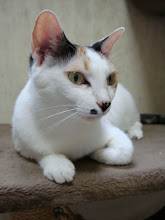
There have been numerous possible scenarios depicted on the impact of the internet on urban spaces. Considering ubiquitous/pervasive computing, mobile, wireless connectivity and the acceptance of the Internet as a non-extraordinary part of our everyday lives mean that physical urban space is augmented, and digital in itself. This poses new problems as well as opportunities to those who have to deal with it.
This book explores the intersection and articulation of physical and digital environments and the ways they can extend and reshape a spirit of place. It considers this from three main perspectives: the implications for the public sphere and urban public or semi-public spaces; the implications for community regeneration and empowerment; and the dilemmas and challenges which the augmentation of space implies for urbanists. Grounded with international real -life case studies, this is an up-to-date, interdisciplinary and holistic overview of the relationships between cities, communities and high technologies.Contents: Introduction: augmented urban spaces, Alessandro Aurigi and Fiorella de Cindio; Part 1 Augmented Spaces: Alessandro Aurigi; Places, situations and connections, Katharine S. Willis; Framing, locality and the body in augmented public space, Patrick Allen; Mobile networks, urban places and emotional spaces, Heesang Lee; Epigraphy and the public library, Malcolm McCullough; Impacts of social computing on the architecture of urban spaces, Marcus Foth and Paul Sanders; Towards spatial protocol: the topologies of the pervasive surveillance society, David Murakami Wood. Part 2 Augmenting Communities: Fiorella de Cindio; The city and the 2 sides of reciprocity, Gary Gumpert and Susan Drucker; Social place identity in hybrid communities, Celene Navarrete, Esperanza Huerta and Thomas A. Horan; The interplay between the actual and the virtual in the Milan community network experience, Fiorella de Cindio, Laura Anna Ripamonti and Ines di Loreto; Enabling communities in the networked city: ICTs and civic participation among immigrants and youth in urban Canada, Diane Dechief, Graham Longford, Alison Powell and Kenneth C. Werbin; Pioneers, subcultures and cooperatives: the grassroots augmentation of urban places, Mark Gaved and Paul Mulholland; Augmenting communities with knowledge resources: the case of knowledge commons in public libraries, Natalie Pang, Tom Denison, Kirsty Williamson, Graeme Johanson and Don Schauder; City information architecture: a case study of OTIS (Opening the Information Society Project) in Sheffield, UK, Michael Powell and Adrian Millward. Part 3 Planning Challenges in the Augmented City: Alessandro Aurigi; Public space in the broadband metropolis: lessons from Seoul, Anthony Townsend; Stretching the line into a borderland of potentiality: communication technologies between security tactics and cultural practices, Annelisa Pelizza; (D)urban space as the site of collective actions: towards a conceptual framework for understanding the digital city in Africa, Nancy Odendaal; Woven fabric: the role of online professional communities in urban renewal and competitiveness, Eleonora di Maria and Stefano Micelli; The digital urban plan: a new avenue for town and country planning and ICT, Romano Fistola; Planning and managing the augmented city: ICT planning in medium-sized cities in São Paulo, Brazil, Rodrigo J. Firmino; Epilogue: towards designing augmented places, Alessandro Aurigi; Index.
About the Editor: Dr Alessandro Aurigi, School of Architecture, Planning and Landscape, Newcastle University, UK and Dr Fiorella De Cindio, Laboratorio di Informatica Civica, University of Milan, Italy

0 comments:
Post a Comment